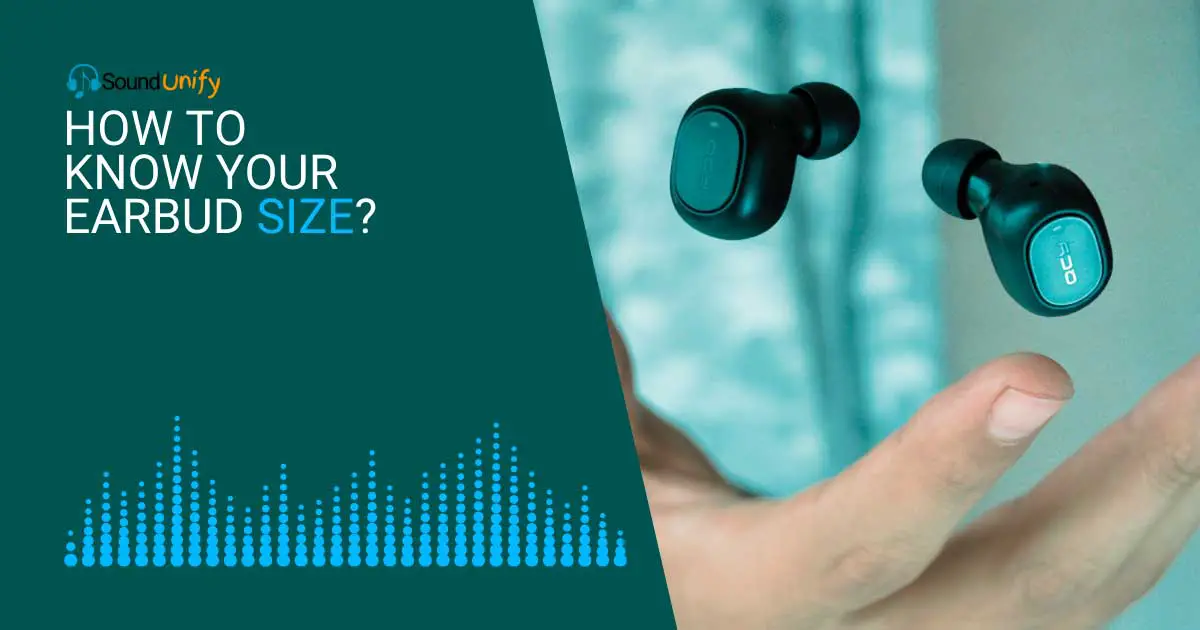I love listening to music while on the go, but finding the fitting earbuds can be difficult. Do you ever feel like your earbuds constantly fall out or hurt your ears?
It’s not just about the sound quality but also the fit. Knowing your earbud size can make all the difference in your listening experience. So, how to know your earbud size?
It’s actually quite simple. The size of your ear canal determines the size of your earbuds. Measuring your earbud size is the best way to assess your ear canal diameter. You can do this with a ruler or an online printable earbud size chart. Once you have your measurement, you can compare it to the size of the earbuds you’re considering to ensure a comfortable and secure fit.
But why is it important to know your earbud size? Well, if your earbuds are too small, they can fall out easily or not provide enough sound isolation.
If your earbuds are too large, they can cause discomfort or even pain in your ear canal. Knowing your earbud size can help you find the perfect pair for your needs and avoid unnecessary discomfort.
So, don’t settle for ill-fitting earbuds any longer. Take the time to measure your ear canal and find the right size. Your ears and your music will thank you.
How to Know Your Earbud Size?
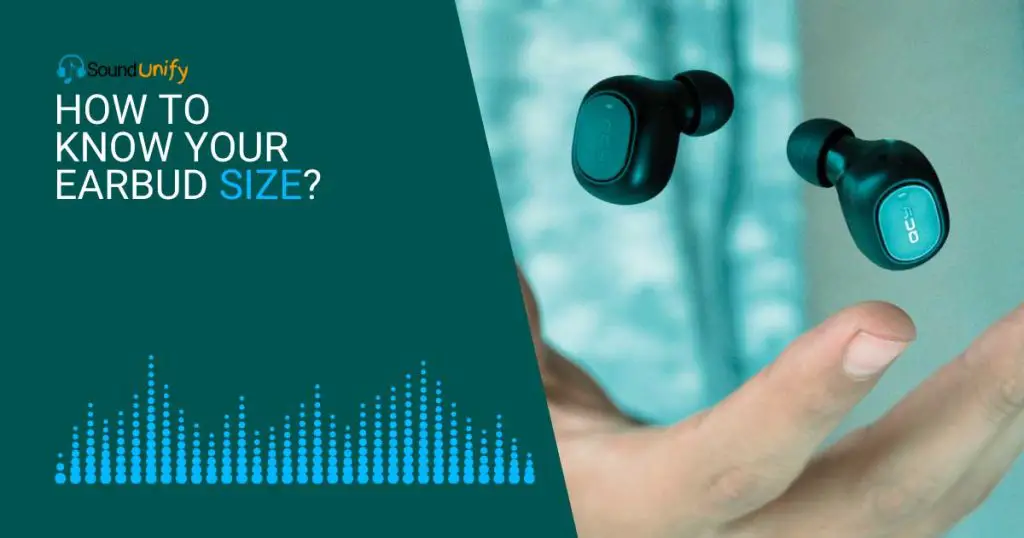
Knowing your earbud size is important when choosing a pair. That will provide you with the best fit and sound quality. Here’s how to determine your earbud size:
1. Understand Your Ear Anatomy
Earbuds come in different sizes and shapes. So, finding one that fits your ears and provides a good seal is essential. This means considering both the shape of your inner ear and how deep or shallow your outer ear canal is.
2. Understanding Earbud Sizes
Earbuds come in three main sizes: XS, S, and M. XS is the smallest size and is usually best for people with smaller ears. S is the medium size, while M is the largest size.
Most earbuds also come in different sizes and types of ear tips. So you can experiment to find the best fit for your ears.
| Earbud Size | Ear Canal Diameter (mm) |
|---|---|
| Extra-Small | Less than 10 mm |
| Small | 10 – 12 mm |
| Medium | 12 – 14 mm |
| Large | 14 – 16 mm |
| Extra-Large | More than 16 mm |
Note: The measurements and size classification may vary depending on the source and manufacturer.
3. Measure Your Ears
Measuring your ears is the best way to determine the size of earbuds that will fit you. You can use a ruler or tape measure to measure your ears from the outer edge of your earlobe to the end of the innermost bend.
You can also use an ear tip fit test, a 3D ear scanner, or consult an audiologist for more accurate results. The ear canal’s size varies from person to person. The earbud tip size should match the ear canal’s diameter.
4. Test the Fit
Once you know your earbud size, you need to test the fit. Try different sizes and types of ear tips to find the ones that fit in your ears.
Walk around with the earbuds, move your head, and adjust the ear tips until you find the perfect fit.
5. Trying on Earbuds
Once you have found the right size and type of earbuds, you can try them on to ensure they fit. The earbuds should fit but not too tightly. Listen to a few songs and adjust the ear tips until you reach the optimal sound quality.
This guide has to help you determine your earbud size. Remember, while it is important to find the perfect fit, it is equally important to take care of your earbuds.
Also, follow the manufacturer’s guidelines for cleaning. And maintenance to ensure the best sound quality and most comfort.
Ear Anatomy and Earbud Fit
Earbud fit is crucial for getting headphones the best sound quality and comfortable experience. If your earbud size isn’t correct, you won’t be able to enjoy the full sound potential.
It’s important to understand the anatomy of your ears. It is also necessary to understand the different parts of the ear and how they relate to earbud fit.
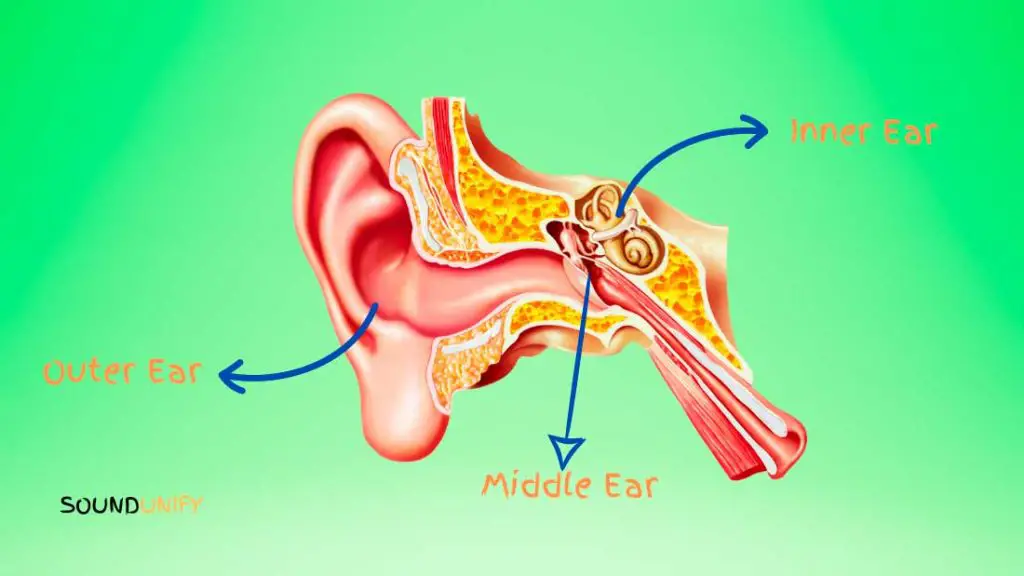
The ear is composed of three main parts:
- The outer ear
- The middle ear
- The inner ear
Each part of the ear has a unique role in hearing, affecting how well earbuds fit and stay in place.
Outer Ear
The outer ear consists of the pinna, the visible part of the ear, and the ear canal. The pinna helps collect sound waves and directs them into the ear canal, where they travel to the eardrum.
The size and shape of the pinna and ear canal can affect how well the earbuds fit. Too big or small earbuds may not fit properly in the ear canal, causing discomfort or poor sound quality.
Middle Ear
The middle ear includes the eardrum and three tiny bones called the ossicles. These bones vibrate in response to sound waves and send the vibrations to the inner ear.
The Eustachian tube also connects the middle ear to the back of the throat. It helps regulate air pressure in the middle ear.
A proper earbud fit can help create a seal in the ear canal. It will prevent outside noise from interfering with the earbuds’ sound.
Inner Ear
The inner ear contains the cochlea, a spiral-shaped structure filled with fluid and tiny hair cells that convert vibrations into electrical signals sent to the brain.
The inner ear also includes the vestibular system, which is responsible for balance and spatial orientation.
A proper earbud fit can help deliver sound to the ear canal. This optimizes the experience of sound quality and minimizes damage to the eardrum.
Do Earbuds Have Sizes?

Yes, earbuds come in a range of sizes and styles. There are three main types of earbuds:
There are three main types of earbuds:
- In-ear Earbuds: These earbuds fit inside the ear canal and create a seal to block out external noise. They are often made of silicone or foam tips that can be interchangeable to fit different ear sizes. In-ear earbuds can also come with varying sizes of ear tips to ensure a proper fit.
- Earbuds with Ear Hooks: These earbuds have a curved or angled piece that wraps around the ear to help keep them in place. They are often used for sports or exercise because they are less likely to fall out during physical activity.
- Bone Conduction Earbuds: These earbuds sit outside the ear canal and use vibrations to send sound through the skull bones. They allow the wearer to hear their surroundings while listening to music or audio.
How Different Earbud Styles and Shapes Can Affect Fit?
The shape and style of earbuds can affect their fit and comfort. In-ear earbuds can sometimes be uncomfortable or cause pain if they are too big or small. Some people prefer the fit of earbuds with ear hooks.
Some earbuds come in different sizes or types of ear tips. It allows the wearer to find the best fit for their ears. Bone conduction earbuds may not fit everyone. Their design is not intended for deep bass or high-fidelity audio.
Finding earbuds that fit to avoid discomfort and ensure the best sound quality is essential. Some people may need to try several types of earbuds to find the ones that work best for them.
How to Measure Ear Size?
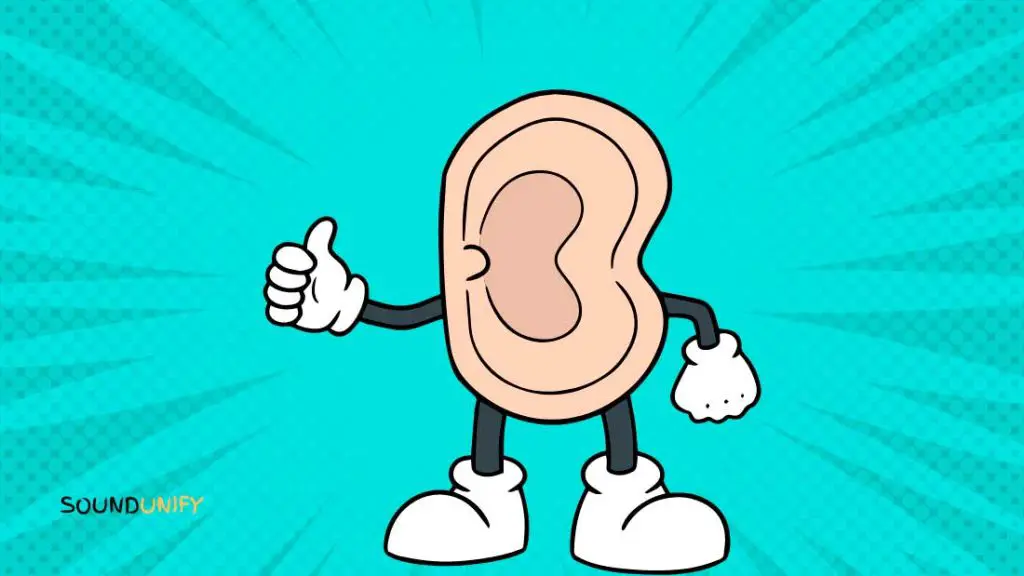
Measuring the size of your ears is essential if you want to find the right earbuds. It’s important to note that most earbuds come in one-size-fits-all designs. But some manufacturers offer different sizes and shapes.
To ensure your earbuds fit, measuring your ears ahead of time is important. So you can choose the best earbud tip size for a secure and comfortable fit.
There are several techniques for measuring the size and shape of your ears. Here is an explanation of different measurement techniques and how to measure your ear size.
1. Ear Tip Fit Test
This method involves trying on different sizes and shapes of ear tips to see which fits best in your ear canal. You can use Sony’s Ear Tip Fit Test app to determine the size and shape of the ear tip you need.
The app also allows you to compare how different shapes and sizes fit in your ears. So you can choose the best one for yourself.
2. Use a Measuring Tape to Find Your Ear Size
Finding the right fit for earbuds, headphones, earplugs, or even custom jewelry often requires knowing the exact size of your ears.
A flexible measuring tape, commonly found in sewing kits, can be an invaluable tool for this purpose. Here’s how you can use it to measure your ear size accurately:
- Gather Your Materials: Ensure you have a flexible measuring tape on hand. If you don’t have one, a piece of string coupled with a ruler can be an alternative.
- Stand in Front of a Mirror: This lets you see what you’re doing, ensuring you place the tape in the right spots on your ear.
- Measure the Length: Begin by placing the end of the tape at the very top of your ear, known as the helix. Stretch the tape down to the bottom of your earlobe. This gives you the length of your ear. Note this measurement down.
- Measure the Width: For some purposes, you might also need the width of your ear. Place the tape across the broadest part of your ear to get this, usually around the middle. Stretch it from one side to the other, ensuring it lies flat against your ear. Record this measurement as well.
- Consider Both Ears: It’s worth noting that our ears aren’t always symmetrical. Measuring both might be a good idea to see if there’s any difference.
With these measurements in hand, you’ll be better equipped to find products that fit your ears perfectly, ensuring comfort and functionality.
3. 3D Ear Scanners
Some manufacturers and retailers offer 3D scanners that can measure the size and shape of your ears.
All you need to do is stand in the scanner briefly. And the scanner will provide you with a detailed map of your ear.
You can then use this map to select the best size and shape of earbuds for your ears.
4. How to Measure Ear Canal Size?
Have you ever thought about how big or small your inner ears are? Knowing this can help you pick the best earplugs or earbuds. Here’s a fun and easy guide to help you measure your ear size:
Earplug Kits:
Think of this like a shoe store for your ears! Some companies, like Earjobs, have kits with different-sized earplugs. Try them on and see which one feels just right.
Fun fact: girls usually have ears that are about 20mm smaller than boys. So, girls might like the smaller plugs, while boys might go for the regular ones.
Finger Test:
There is a cool idea. Start by putting your smallest finger (the pinky) in your ear. If that feels okay, try the next bigger one. This helps you guess the size of ear tips that might be comfy for you.
Understanding Ear Size with Silicone Molds:
A study in the Journal of the Acoustical Society of America used these molds to measure the inside of living human ears. They found out some interesting things:
- At the first bend of our ear canal, the average size was 105.5 mm².
- Going a bit deeper, about 12 mm in, the size was 84.5 mm².
These spots are where they usually place a tool called a wideband acoustic immittance (WAI) probe. But here’s the surprise: these sizes are much bigger than what some official tools (approved by the FDA) think they are.
They’re also bigger than sizes guessed by sound methods or even measurements from ears that aren’t living anymore.
So, silicone molds can give us a clearer picture of our unique ear sizes!
And remember, most ear things like plugs or buds are made to fit everyone. But if you feel your ears are special, these tricks can help.
5. Consult an Audiologist
If you have any doubts about measuring your ears, it is best to consult an audiologist. They can estimate your ears with the right tools and tell which earbud size fits you best.
Do Different Earbuds Require Different Ear Tips?
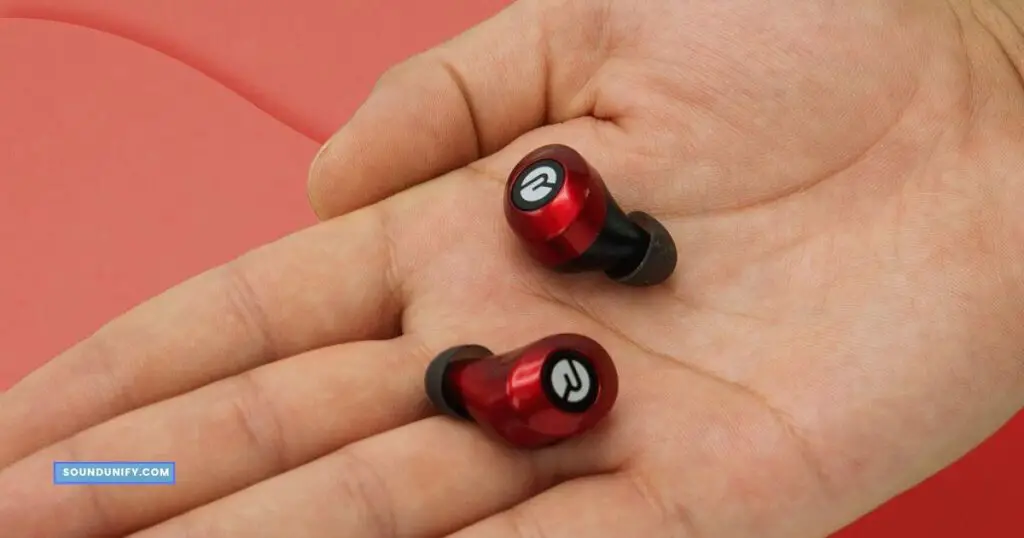
Earbuds tips are important in ensuring that your earbuds fit correctly and comfortably. Different earbud models may need different types of ear tips to provide the best sound quality.
Knowing which type of ear tip works best with your earbuds can take time and effort. So it’s important to do some research before you make a buy.
Here are some of the different types of ear tips available and how they can affect the fit and comfort of earbuds:
1. Silicone Ear Tips
Silicone ear tips are the most common type of ear tip. These are available in various sizes and shapes.
They are soft and flexible and can conform to the shape of your ear canal. They also provide a secure and comfortable fit. Silicone ear tips are easy to clean and replace.
2. Foam Ear Tips
Foam ear tips are memory foam compressing when inserted into the ear canal. It provides a custom fit. They also provide:
- Excellent noise isolation
- Reducing outside noise
- Improving sound quality
Foam ear tips are typically more expensive than silicone ear tips and need to be replaced regularly.
3. Double-flange Ear Tips
Double-flange ear tips have two flanges that seal the ear canal, providing a more secure fit than single-flange ear tips. They also offer better noise isolation and can improve sound quality.
4. Triple-flange Ear Tips
Triple-flange ear tips have three flanges that create a seal in the ear canal, providing the most secure fit of all ear tip types. They also offer excellent noise isolation and can improve sound quality.
| Earbud Type | Recommended Ear Tip Type |
|---|---|
| In-ear | Silicone ear tips, Foam ear tips |
| Sport/Workout | Double-flange ear tips, Triple-flange ear tips |
| Noise-canceling | Foam ear tips, Triple-flange ear tips |
| Wireless Bluetooth | Silicone ear tips, Foam ear tips |
| Audiophile/Hi-Fi | Foam ear tips, Double-flange ear tips |
| Gaming | Foam ear tips, Double-flange ear tips |
| True Wireless | Silicone ear tips, Foam ear tips |
| Bone Conduction | Silicone ear tips |
| Custom-fit earbuds | Custom-molded ear tips |
How Do You Know What Size Earbud Tips To Get?
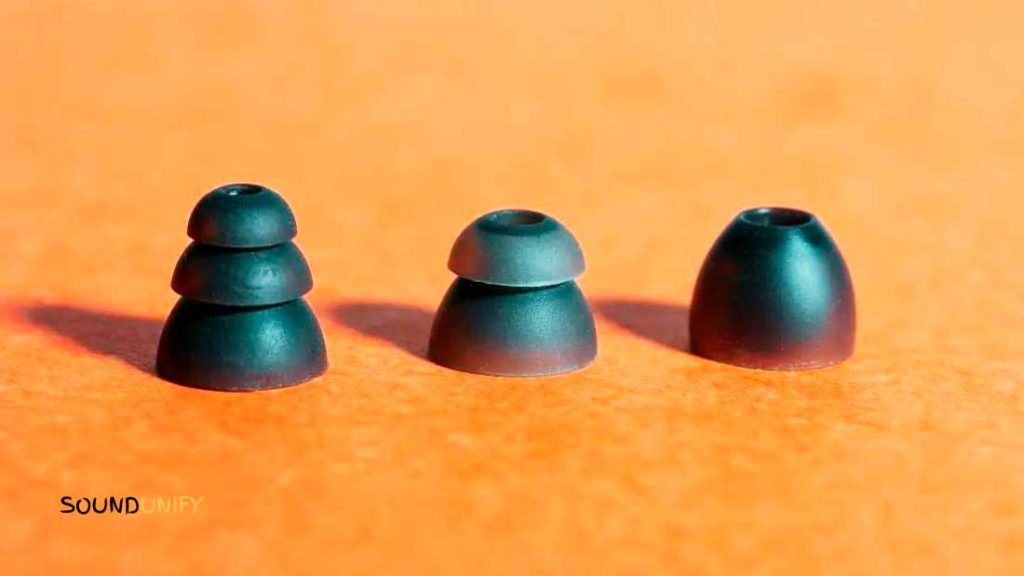
Finding the right size earbud tip for your ears can be tricky. The size and shape of your ear can affect how earbuds fit and how well they stay in place.
Here are some steps you can follow to find the right size earbud tips:
- Check the manufacturer’s size guide: Many earbud manufacturers offer a size guide to assist in selecting the appropriate earbud tips. To guarantee that you have the right fit for your ear canal. It is recommended to consult the manufacturer’s guide.
- Measure your ear canal: To measure the circumference of your ear canal, use a soft measuring tape or a printable ear template. The earbud tip size should match the ear canal’s diameter, which varies from person to person.
- Try on different sizes: It is important to try different sizes of earbuds to find the one that fits in your ear. Many earbud companies include different sizes in the package. So you can find the right size for your ears.
- Check for a secure fit: Insert the correct size earbud tips into your ear and twist them to create a safe and comfortable fit after you have found them. You should feel a slight suction or “seal” when the earbud is in place.
- Test the sound quality: Once you have found the right size earbud tips that fit your ear canal, test the sound quality. A good earbud fit should provide optimal sound quality and noise isolation.
Why Do Earbuds Not Fit in My Ears?
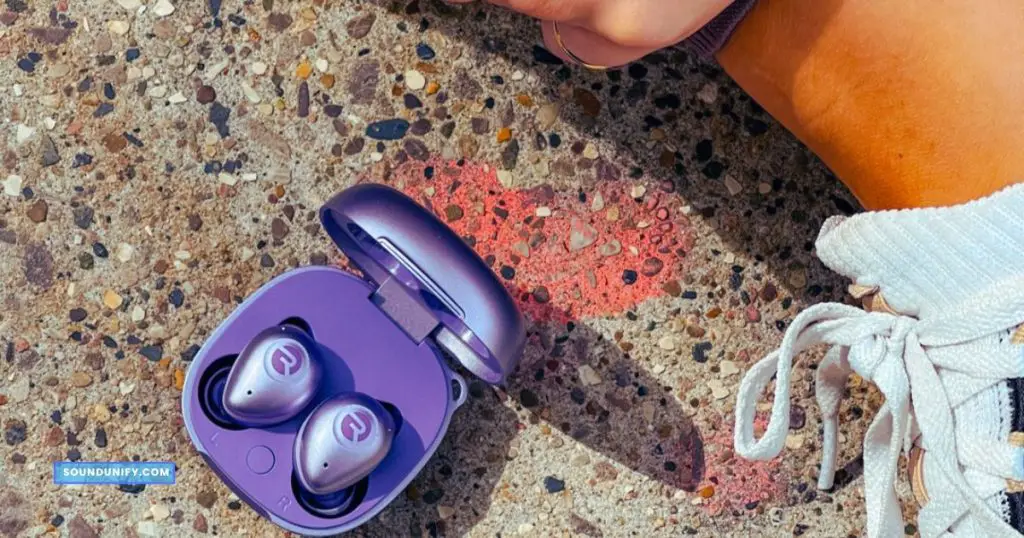
Earbuds not fitting your ears can be due to a variety of factors:
- Incorrect earbud size: If earbuds are too big or too small, they won’t fit in the ear canal. Knowing the size of your ear canals and choosing the right earbuds is essential to ensure the best fit and sound quality.
- Poor quality earbuds: Low-quality earbuds may not have a snug fit or may have poorly made ear tips that don’t seal in the ear canal. This can reduce sound quality and cause the earbuds to fall out or hurt your ears.
- Poorly-fitted ear tips: Ear tips that are too big or too small for the ear canal may not provide the best sound quality or comfort. Experimenting with different ear tip sizes and types is essential until you find the best fit for your ears.
- Ear wax or dirt buildup: Earwax or dirt buildup can negatively impact earbud fit and sound quality. Regularly clean your earbuds with soap and water to prevent these issues, and replace the ear tips when needed.
- Incorrect ear tip size: It is important to find the correct size and type of ear tips for your ear canals. Too small ear tips may not provide a secure fit, allowing sound to leak and reducing sound quality. Too large ear tips can cause discomfort or pain.
Tips for Improving Earbud Fit
Here are some tips for improving earbud fit:
- Use the right size ear tips: Using the right size ear tips is crucial to achieving a good fit. Try different sizes to find the one that fits your ear canal.
- Insert earbuds: Insert the earbuds into your ear canal to achieve a good fit. Place the earbud into your ear canal and twist it to create a secure and comfortable fit.
- Experiment with different earbud styles: Different earbud styles, such as in-ear, on-ear, and over-ear, can affect fit and comfort. Experiment with varying types of earbuds to find the one that suits your ear canal and provides a comfortable fit.
- Try different ear tip materials: Ear tips come in other materials, such as silicone, foam, and rubber. Experiment with different ear tip materials to find the one that provides the best fit and comfort for your ears.
- Wear earbuds correctly: Wearing earbuds correctly can improve fit and comfort. Ensure that the earbuds are positioned perfectly in your ear canal, and avoid tugging or pulling on them, which can dislodge them.
- Clean earbuds regularly: Regularly clean the earbuds and ear tips to prevent earwax buildup. That can affect the fit and sound quality.
- Use earbuds with adjustable features: Some have flexible features like ear hooks or tips. These features help achieve a better fit and provide more comfort.
Earbud Maintenance and Care
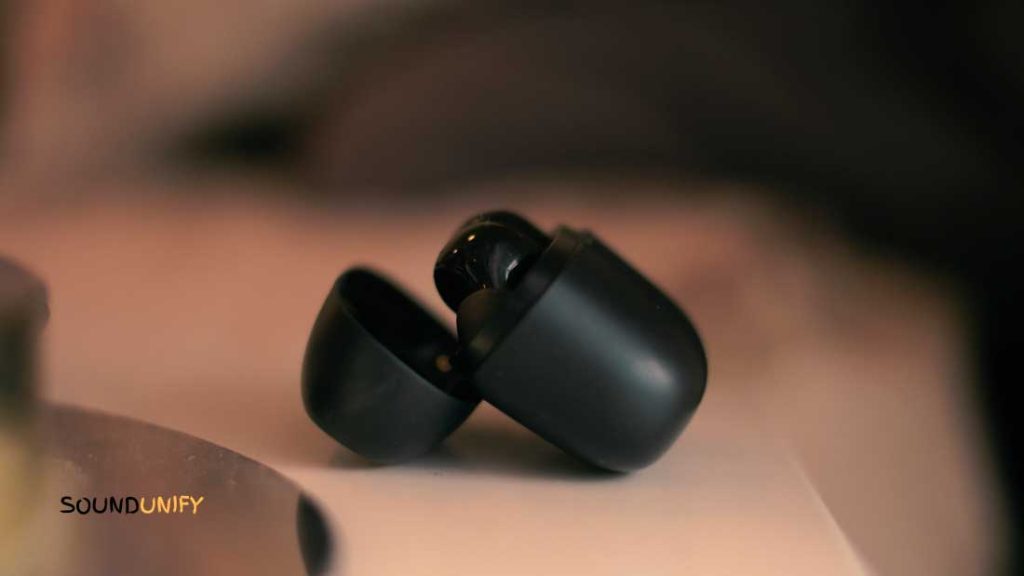
Earbuds maintenance and care are essential for ensuring that your earbuds last long and provide the best sound quality. You can take a few simple steps to keep your earbuds in top condition.
Here are some tips for caring for and maintaining earbuds:
- Clean earbuds regularly: Regular cleaning of earbuds is essential to prevent earwax buildup. Which can affect the fit and sound quality. Use a soft, dry cloth or a cotton swab to clean the earbuds and tips. Avoid using water or cleaning solutions that can damage the earbuds.
- Store earbuds: Store earbuds in a clean, dry place to prevent damage and keep them in good condition. Use a case or pouch to store earbuds when not in use.
- Avoid pulling on earbuds: Avoid tugging or pulling on earbuds, which can damage the wires and affect performance. Instead, remove the earbuds from your ears and store them.
- Replace ear tips when necessary: Ear tips can wear out over time, so it’s essential to replace them when necessary. Earbuds usually come with many sizes of ear tips. So you can find the right size that fits your ears.
- Check for damage: Regularly check the earbuds and wires for any damage or wear and tear. If you notice any damage, stop using the earbuds and get them repaired or replaced.
- Don’t expose earbuds to extreme temperatures: Avoid exposing earbuds to extreme temperatures, such as direct sunlight or extreme cold. This can damage the earbuds and affect performance.
- Be gentle with earbuds: Handle earbuds gently to prevent damage. Avoid dropping or throwing them, as this can damage the earbuds and affect performance.
FAQ
What Happens If Earbuds Are Too Big?
If earbuds are too big, they will not fit snugly in the ear canal. That can lead to decreased sound quality and may cause the buds to become easily dislodged. It can also cause discomfort due to the pressure of the buds against the ear canal.
What Is the Correct Way to Wear Earbuds?
Earbuds should be placed in the ear so that the tip of the bud sits in the ear canal, creating an acoustic seal. The earbud’s angle should follow the ear canal’s shape to ensure optimal sound quality and comfort.
Do I Need Bigger or Smaller Earbuds?
It depends on the size and shape of your ear canal. If the earbuds are too small, they may not fit well. If the earbuds are too large, they may be uncomfortable to keep in place. You may need to experiment with different sizes and shapes to find the right fit.
What Are Some Earbuds That You Recommend?
We recommend Apple Airpods Pro, Bose QuietComfort earbuds, Sony WF-1000XM3, Jabra Elite 85t, and the Sennheiser Momentum 2.
Are All Earbuds the Same Size?
No, different brands and models of earbuds come in different sizes. Some brands offer small, medium, and large earbuds, while others may offer only one size. It is essential to check the sizing of your earbuds before purchasing them to ensure that they will fit your ears correctly.
How Do You Know If Your Earbuds Are Too Big?
If your earbuds are too big, you will likely experience decreased sound quality because the earbuds won’t fit tightly into the ear canal. Additionally, the earbuds may be uncomfortable or easily fall out of the ear due to the pressure from the earbud that is too big.
What Size Earbuds Should I Use?
Use the earbud size that fits comfortably and securely in your ear canal, typically provided in small, medium, or large ear tips with most earbud products.
Why Do My Earbuds Keep Falling Out?
Your earbuds may fall out due to them being the wrong size, having a poor design for your ear shape, or because of excessive movement during activities.
How Deep Should Earbuds Go?
Earbuds should be inserted just deep enough to seal your ear canal. Ensuring optimal sound quality and comfort without pushing them too far.
Before you go…
We need to understand the sizing of earbuds for most usage. The inappropriate fitting can restrict you from enjoying your full potential. Please look at my upcoming article to gain further insight into how to use earbuds.
James Dimento is a Chief-in-Editor of SoundUnify. He is a headphone enthusiast and creative writer passionate about audio technology. He has three years of experience writing about headphones and sound quality and is responsible for creating reviews and taking care of all administration.
